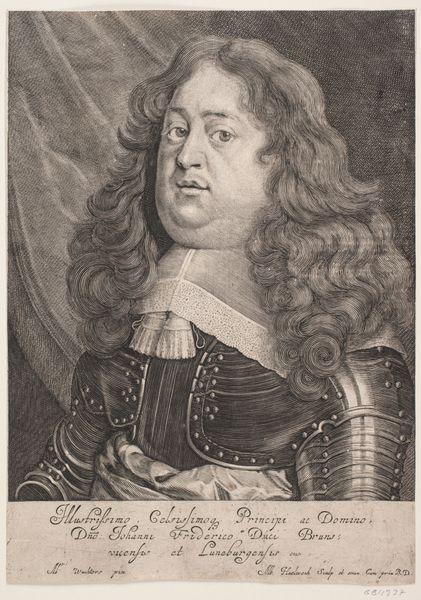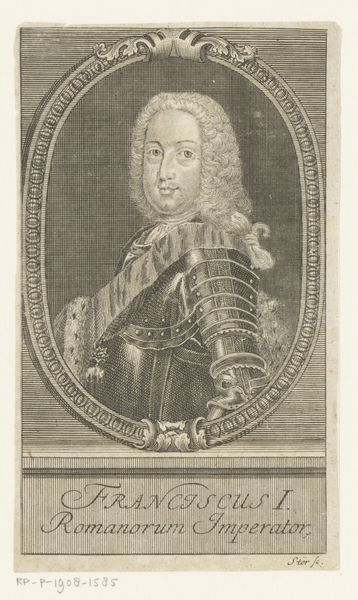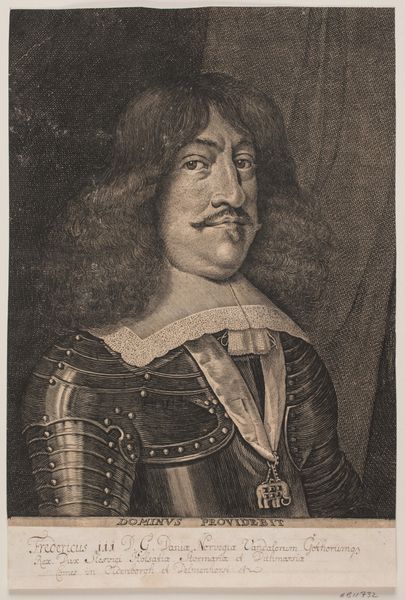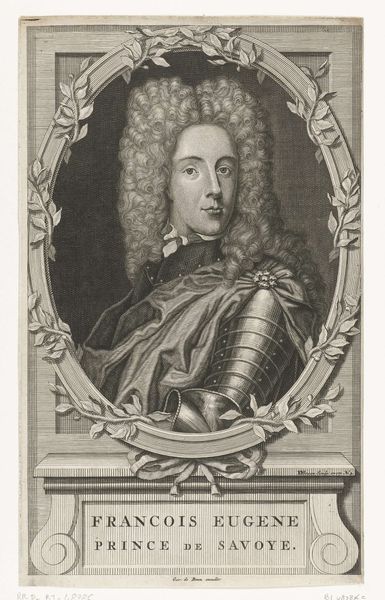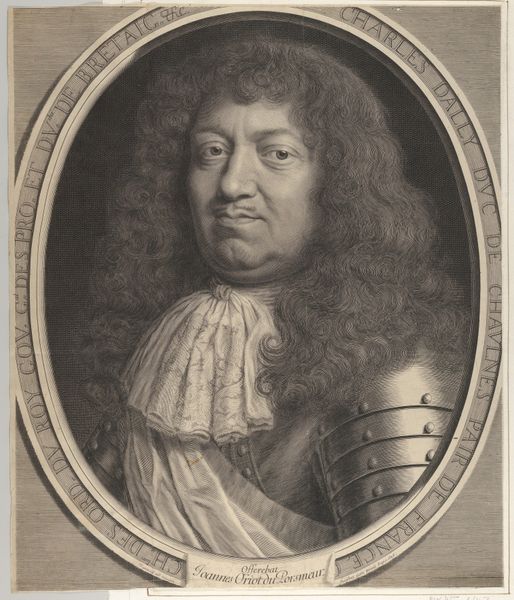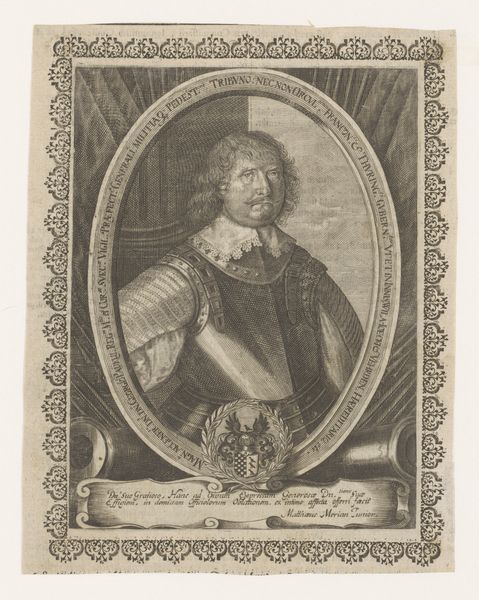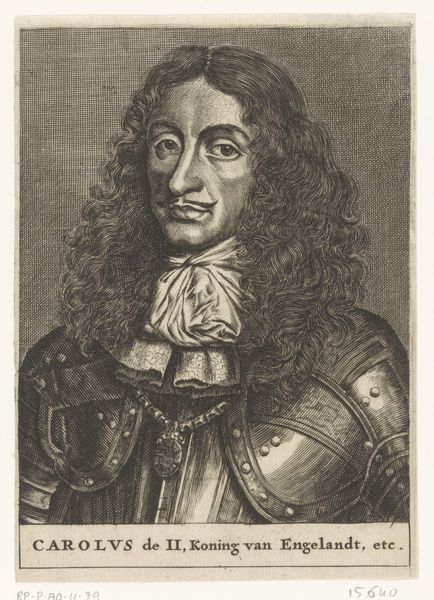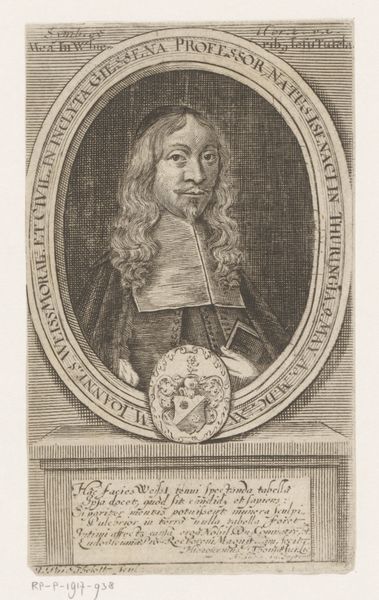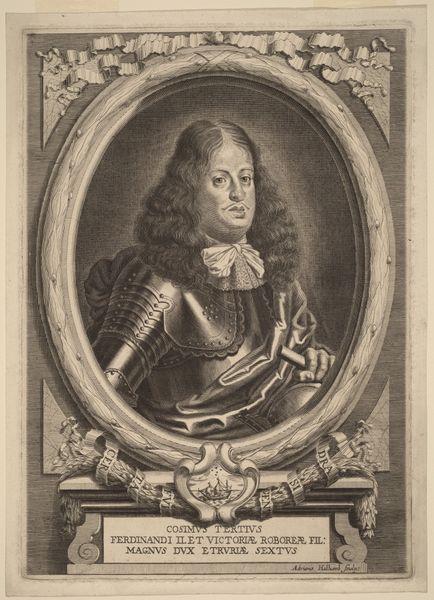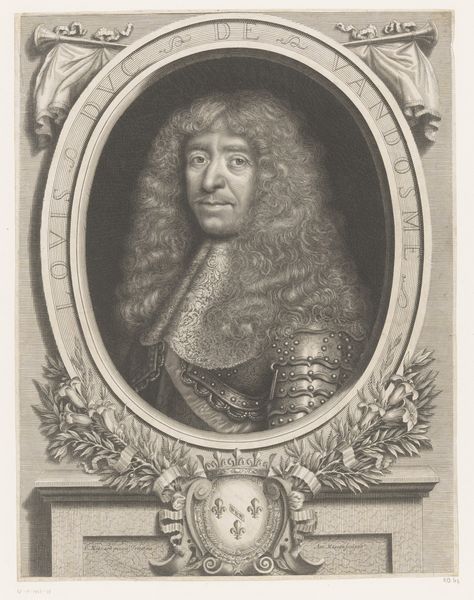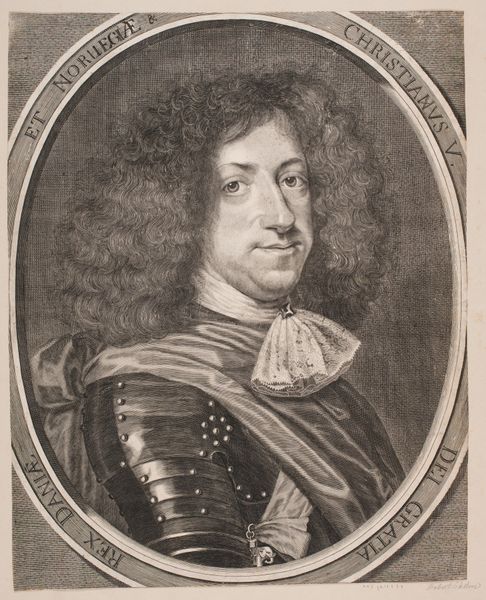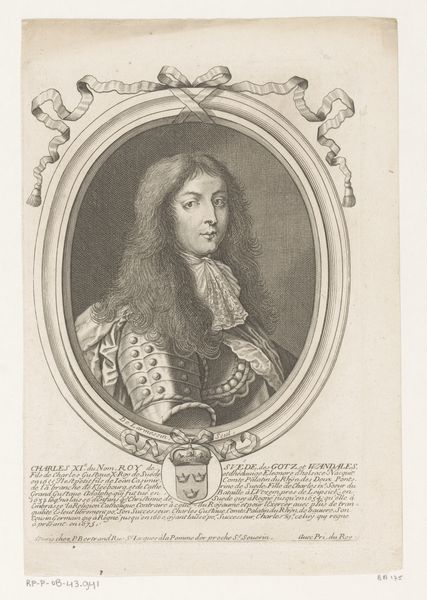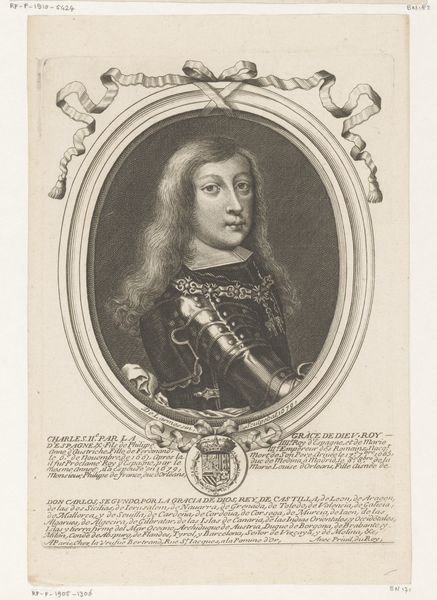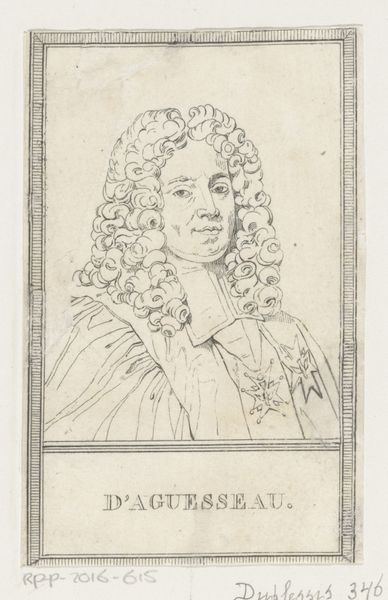
print, engraving
#
portrait
#
baroque
# print
#
portrait drawing
#
history-painting
#
engraving
Dimensions: 337 mm (height) x 213 mm (width) (plademaal)
Curator: Before us is an engraving titled "Johan Friedrich af Braunschweig" created between 1658 and 1662 by Albert Haelwegh. It resides here at the SMK, the Statens Museum for Kunst. The piece immediately gives off a stately, imposing feel. Editor: I agree. There’s a softness to it as well, though, despite the armor. The flowing hair and almost melancholy gaze… it creates a captivating tension. It seems this wasn't intended to feel as rigid as the armour he wears. Curator: Absolutely. Baroque portraiture, while often celebratory, wasn't immune to the nuances of portraying its subjects with greater depth, using printmaking’s ability to replicate an image and thus disseminate idealogical and political statements to a broader population. The print served a public role beyond a mere likeness, becoming a visual ambassador of sorts for Johan Friedrich's status. Consider also the role of the printing house for which Haelwegh likely worked, how the artist contributed towards solidifying the court's public persona, and its perceived status within Europe. Editor: I'm also interested in what feels… almost vulnerable about it, despite the power dynamics. He's undeniably wealthy and privileged, signified in the armor and finery, but is that sadness I see a hint of acknowledging the weight and responsibilities, maybe even anxieties, that come with such a position? The way history paintings and portraits so often seem to portray subjects who've had this complexity airbrushed out can tell us quite a lot. Are we allowed, or even equipped to show those in power as people rather than monoliths? Curator: It's certainly a compelling question to bring forth given this portrait’s inherent propagandistic context. Given the time of its creation and patronage of the elite, perhaps the engraving served to humanize Johan Friedrich slightly, granting the masses a closer proximity through its accessible, easily reproducible design? Editor: Perhaps the 'flaws' shown are simply an honest appraisal. Is there a subversive undertone? Or maybe just something genuinely humane. It strikes me as we seek new and broader social interpretations of portraiture; we must remain conscious about portraiture's role in image control, how effectively individuals such as Friedrich use these tools, and which audience stands to benefit from these designs. Curator: Indeed, there’s much more to consider regarding this work's function as public-facing imagery. Editor: Food for thought on our perceptions of power and representation in art.
Comments
No comments
Be the first to comment and join the conversation on the ultimate creative platform.
